This post may contain affiliate links and we may earn a small commission when you click on the links at no additional cost to you. As an Amazon Affiliate, we earn from qualifying purchases. You can read our full disclaimer here.
If you’re new to aquaponics, it’s essential to properly treat aquaponics water to ensure the health of your fish and plants. Aquaponics systems require a delicate balance between fish, plants, and water. You need to maintain the proper water quality to keep everything healthy.
There are many factors to consider when treating aquaponics water, including the pH, ammonia and nitrate, and dissolved oxygen content. Neglecting any of these parameters can lead to devastating consequences for your fish and plants. Thankfully, with some knowledge and careful attention, you can easily maintain a healthy environment in your aquaponics system.
Key Takeaways:
- Properly treating aquaponics water is crucial to maintaining the health of the fish and plants in your system.
- When treating aquaponics water, factors include pH, ammonia, nitrate, and dissolved oxygen content.
- Neglecting water quality parameters can lead to severe consequences for your system.
Understanding Aquaponics Water Quality
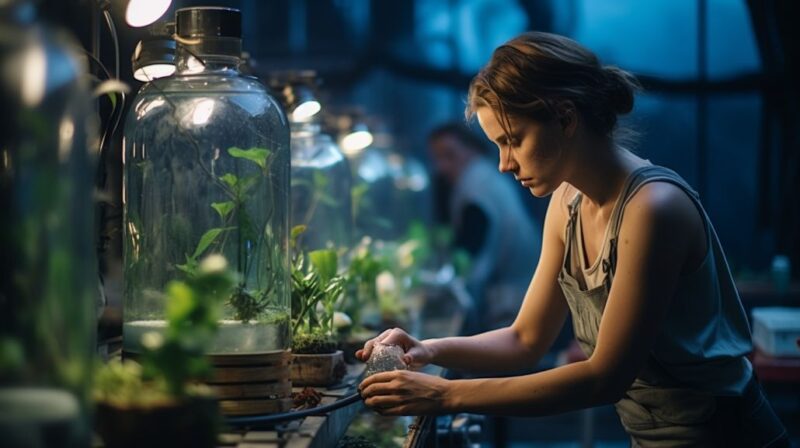
If you’re new to aquaponics, you must understand that water quality is essential to maintaining a healthy and thriving system. There are several key parameters to consider when monitoring water quality.
Ammonia
Ammonia is a fish waste byproduct and is lethal to both fish and plants in high concentrations. In aquaponics systems, beneficial bacteria convert ammonia into nitrite and nitrate, which is less harmful. Maintaining this compound’s low levels is crucial to avoid ammonia toxicity.
Nitrite and Nitrate
As mentioned, nitrite and nitrate are the end products of the nitrogen cycle in aquaponics systems. Nitrite is still toxic to the fish and plants, so maintaining low concentrations of this compound is also important. Nitrate, on the other hand, is essential for plant growth and is typically less toxic. However, excessive nitrate can cause problems, such as algae growth and reduced dissolved oxygen levels.
Dissolved Oxygen
Dissolved oxygen (DO) is crucial for fish health and plants in aquaponics systems. DO levels can decrease due to factors such as high water temperature, overstocking of fish, or lack of aeration. Providing adequate aeration and maintaining appropriate DO levels is essential to prevent fish stress and promote healthy plant growth.
Monitoring and regulating these critical parameters is vital to maintaining the health of your aquaponics system. Testing kits are available to measure water quality, and corrective measures can be taken if needed. The following section will discuss strategies to prevent and control algae growth in aquaponics water.
Preventing Algae Growth in Aquaponics Water
Algae growth is a common problem in aquaponics systems, and if left unchecked, it can clog grow media and harm the fish and plants. However, there are several strategies you can use to prevent and control algae growth in your system.
The first step is to ensure that your aquaponics water is filtered correctly. Adequate mechanical filtration will remove solid waste and excess nutrients from the water, which can fuel algae growth. You can also consider adding biological filtration, such as a biofilter, to enhance your system’s water quality.
Another way to prevent algae growth is to use appropriate growth media. Algae thrive in wet and sunny conditions, so using a growing media that is too wet or allows too much light to reach the water can encourage algae growth. Consider using a grow media that promotes good drainage and blocks sunlight, such as gravel or clay pellets.
Managing fish waste is also essential in preventing algae growth. Excess fish waste in the water can provide nutrients for algae to grow. You can avoid this by ensuring your fish are not overfed and regularly removing any uneaten food or waste from the system.
If you notice algae growth in your system, there are several ways to address it. One method is manually removing algae from the water using a net or similar tool. You can also consider adding aquatic plants to your system, such as water hyacinths or duckweed, which can compete with algae for nutrients.
Overall, preventing and controlling algae growth is crucial for the health and well-being of your aquaponics system. These strategies can maintain healthy water quality and ensure your fish and plants thrive.
Ensuring Proper Aeration in Aquaponics Systems
When it comes to maintaining a healthy aquaponics system, proper aeration is essential. The quality and health of your fish depend on the amount of dissolved oxygen in the water, which is influenced by aeration. When dissolved oxygen levels are low, fish become stressed and more susceptible to diseases, resulting in poor growth and overall health.
You should employ a few key strategies to ensure proper aeration in your aquaponics system. First, consider the size of your aquaponics system and the number of fish you have. Larger systems and more fish require more aeration, so you may need to invest in a larger air pump or diffuser.
You should also ensure that your air stone or diffuser is placed in a location that allows for even oxygen distribution throughout the system. This will help to prevent any areas of stagnant water that can lead to low oxygen levels and fish stress.
Finally, regularly monitor your dissolved oxygen levels to ensure they remain within a healthy range for your fish. You can perform this with a simple test kit once a week.
By following these strategies and prioritizing proper aeration in your aquaponics system, you can help ensure your fish’s health and well-being and maintain a thriving system.
Maintaining Water Balance in Aquaponics Systems
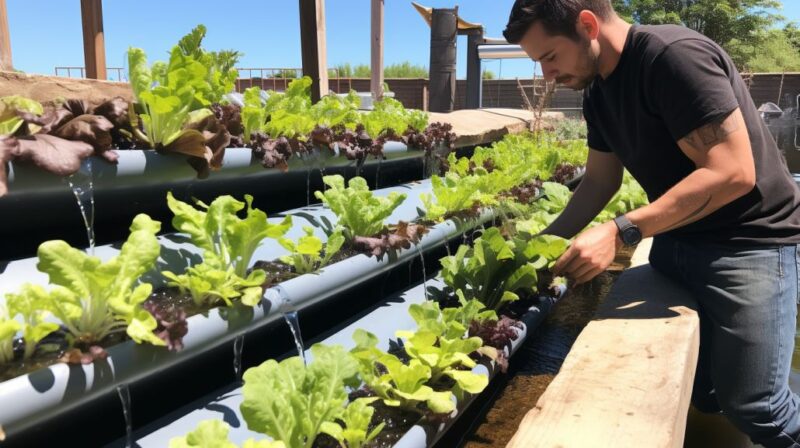
One of the critical factors in the success of an aquaponics system is maintaining proper water balance. This involves ensuring that the right amount of water is in the fish and sump tank and that the water parameters are within the desired range for both fish and plants.
The fish tank is where the fish are kept, and their waste is produced. This waste, containing ammonia and other compounds, is broken down by beneficial bacteria into nitrite and nitrate. Plants use nitrate as an essential nutrient, so it is vital to maintain a sufficient level of nitrate in the water.
On the other hand, the sump tank serves as a backup for the fish tank and helps regulate water flow throughout the system. It also provides a place to store excess water, which can be beneficial during heavy rain or other water disruptions.
| Fish Tank | Sump Tank |
|---|---|
| Keeps fish | Backs up the fish tank |
| Produces fish waste | Regulates water flow |
| Needs good filtration | Stores excess water |
To maintain proper water balance, it is important to regularly test the water in both the fish and sump tanks. A water testing kit can measure pH, ammonia, nitrite, and nitrate levels. If any of these levels are outside the desired range, adjustments should be made to bring them back into balance.
Another critical factor in water balance is the water in the system. Too much or too little water can cause problems with plants and fish health. Generally, it is recommended to keep the water level in the fish tank at about two-thirds of its capacity and maintain a consistent water level in the sump tank.
Maintaining proper water balance is crucial for the health and success of your aquaponics system. Regularly testing the water, monitoring the water levels, and making necessary adjustments can ensure your fish and plants thrive.
Using Appropriate Aquaponics Fish Species
When selecting the species of fish for your aquaponics system, there are a few notable factors to consider. One of the most popular choices is tilapia. This hardy and fast-growing fish can adapt to various water conditions. However, choosing a species that will thrive in your system and contribute to the ecosystem’s overall health is paramount.
Aquaculture experts recommend selecting fish well-suited to your region’s water conditions. For instance, if your local water source contains high levels of minerals, you may want to choose a better fish to tolerate these conditions. Additionally, it’s imperative to consider the health and well-being of the fish, as this is crucial not only for their survival but also for the health of the plants in the system.
Tilapia is a common choice for aquaponics systems, but it’s important to note that several different tilapia species exist. Some are better adapted to colder water temperatures, while others are more tolerant of warmer conditions. You’ll need to choose a species that will be comfortable in the water temperature of your aquaponics system.
In addition to considering the water conditions and the health of the fish, you’ll also want to think about the size of the fish. Some species multiply and can outgrow your system if you’re not careful. You’ll want to choose species that will reach a suitable size for your setup, considering the space in your fish tank and the amount of food and nutrients available to the fish.
Overall, selecting suitable fish species for your aquaponics system is central to ensuring the health and well-being of the fish, the plants, and the entire ecosystem. You can create a sustainable and productive aquaponics system by choosing suitable species and providing them with the conditions they need to thrive.
Ensuring Plant Health in Aquaponics Systems
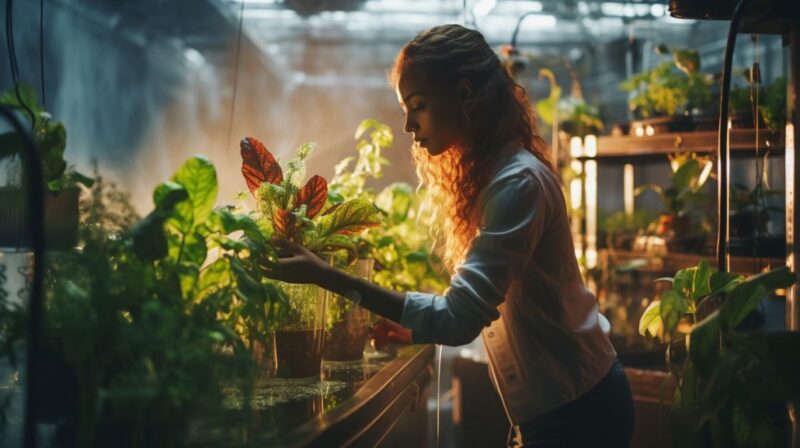
If you want to have a successful aquaponics system, it’s essential to maintain the health of your plants. Here are some tips for you:
Care of Plant Roots
The root system is the foundation of a healthy plant. In an aquaponics system, the roots of your plants can absorb nutrients from the water while also filtering out harmful toxins. Make sure to keep the roots clean and free from debris. You can use net pots or grow baskets to support your plants and their roots.
Pest Management
Pests can wreak havoc on your plants. While you should avoid using pesticides in aquaponics systems, there are some safe ways to control pests. One option is introducing beneficial insects like ladybugs or lacewings, which will consume harmful insects like aphids and mites. You can also use physical barriers or companion planting to help keep pests away.
Avoiding the Use of Pesticides
Pesticides can be harmful to the fish in your aquaponics system. If you must use pesticides, ensure they are approved for use in aquaculture, and follow the instructions carefully. It’s better to avoid pesticides altogether and rely on other methods for pest management.
Maintaining your plants’ health is critical to your aquaponics system’s success. By keeping the roots clean, managing pests, and avoiding pesticides, you can create a thriving environment for your plants to grow and flourish.
Testing Water, Inspecting the Fish Tank and Grow Beds
To maintain the health of your aquaponics system, regularly test the water and troubleshoot any issues that arise. Here are some tips to help you keep your system running smoothly:
Test the Water
Regular water tests can help you detect any issues with your aquaponics system before they become problematic. You can purchase a water test kit online or from your local pet store. Test the water in your fish tank and grow beds at least once a week to check for ammonia, nitrite, nitrate levels, and pH balance.
Check the Fish Tank
The fish tank has a critical use in your aquaponics system. Ensure that there’s no solid buildup at the bottom of the tank that could harm your fish or clog your system. If you find any substantial buildup, you can remove it manually or with a siphon. Additionally, check the water level to ensure it is at the correct level and enough water for your fish to swim comfortably.
Inspect Your Grow Beds
Check your grow beds for signs of poor water quality or pests that could harm your plants. Ensure the water flows correctly through your grow beds and the grow media is not clogged. If you find any problems, you can remove the affected plants, clean the grow bed, and re-plant.
Troubleshoot Common Issues
If you notice any issues with your aquaponics system, don’t panic – most problems have a simple solution. For example, suppose the water test shows high ammonia or nitrite levels. In that case, you can perform a partial water change or add a nitrifying bacteria supplement to the system to boost biological filtration. If the water is cloudy, it’s a sign of poor water quality; you can add activated carbon to the system to help clarify the water.
Prevent Future Issues
Maintaining good water quality in an aquaponics system is an ongoing process. To prevent future issues, check the water parameters regularly, feed your fish appropriately, and avoid overstocking the fish tank. Additionally, gradually add any supplements or treatments to avoid shocking the system. Good water quality will lead to healthy fish and plants and a thriving aquaponics system.
Conclusion
Now that you better understand how to treat aquaponics water, you can ensure the health and well-being of your fish and plants. Remember to test your water regularly, maintain adequate dissolved oxygen levels, and prevent algae growth through proper filtration and fish waste management. Additionally, selecting appropriate fish species and avoiding pesticides can contribute to the health of your aquaponics system.
Maintaining proper water balance and troubleshooting common issues promptly can prevent harm to your fish and plants and promote optimal growth and performance. Keeping these factors in mind will help you to get the most out of your aquaponics system.
So, treat your aquaponics water carefully and enjoy the benefits of a thriving fish and plant ecosystem in your home.

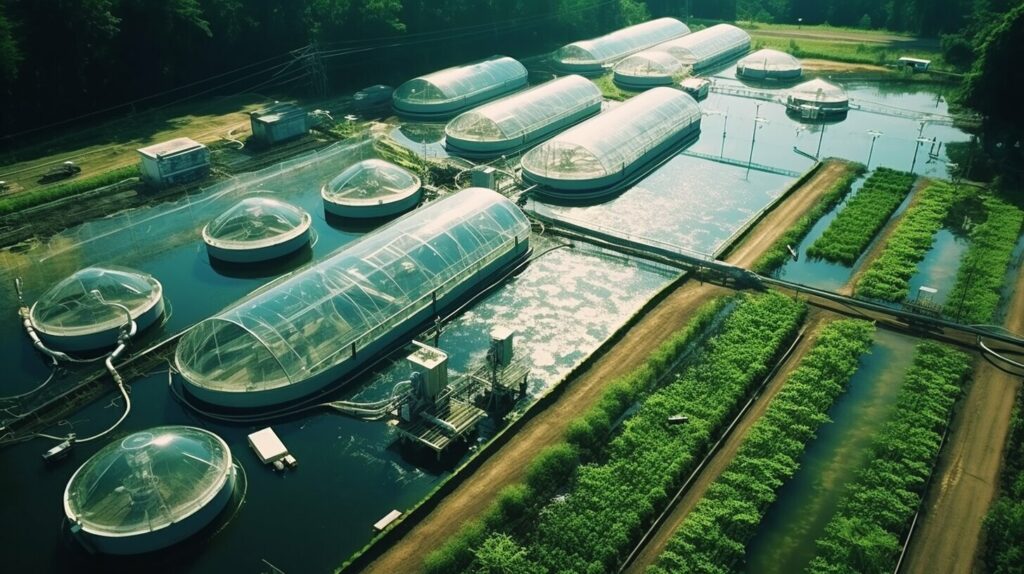
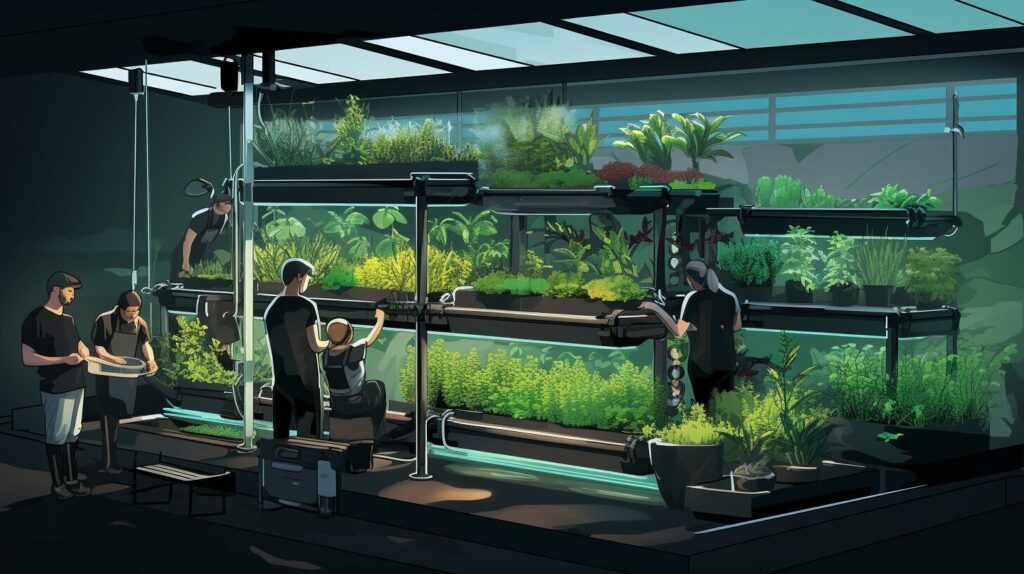
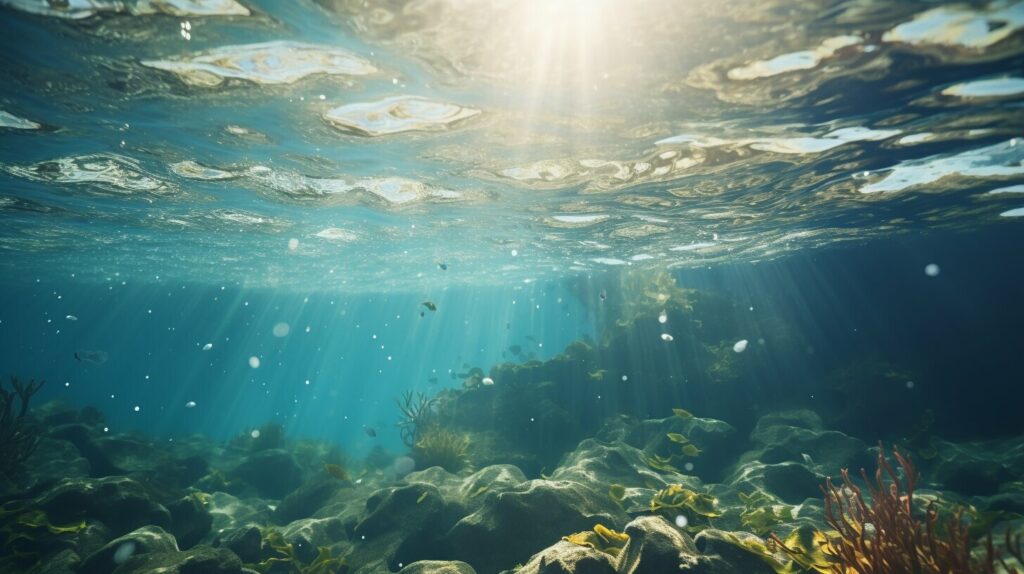
Pingback: Aeration Techniques for Healthy Aquaponics Systems - Aquaponics Daily